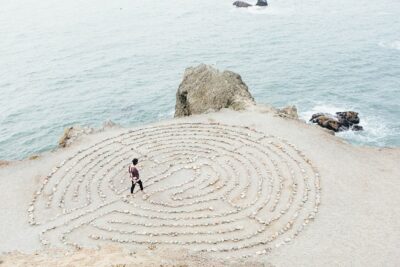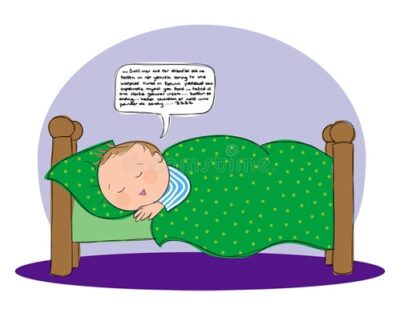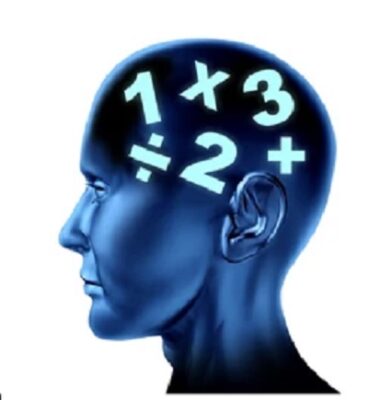by Christina Leimer | Researching Consciousness for Social Change

Source: Pixabay
When I was a child, we lived on a farm and I played in the woods, creeks, ponds and fields—usually alone. The natural world was my companion. When I needed comfort or to make sense of things, sitting by the creek or in a tree helped. Insights came to me a lot. Occasionally I felt enfolded, like being wrapped in a big warm blanket. Whatever this was, it was natural and familiar, but unnamed. What gave me that feeling? Where did those insights come from?
I never heard anyone talk about this kind of experience. I never asked anybody about it either. Christianity was part of my day-to-day world, so at about age 9 or 10, I thought maybe this living presence was God. I tried to test that idea by going to any churches I could get to—to see if I felt the presence there. I never came to a conclusion about what that sense is, even after a lot of psychological and spiritual exploring as a young adult. Over time though, I began calling the experience itself nature intuition.
Now, after decades of occasional intuitive connections with nature, I’m wondering again what that presence is and how nature intuition works.
Nature Walks and Nature Intuition
Many studies show nature’s de-stressing effects on people. Contact with the natural world can help people be more resilient. It can make us calmer, more accepting of others and open us to a broader perspective on life. What a fabulous medicine! And it’s free. Usually.
But, is nature intuition part of this? I don’t usually hear anyone mention it. In 2019, at a forest bathing conference, Dr. Mark Ellison of Hiking Research talked about the effects of nature on people. He said Moses went to the mountain, Jesus to the desert, the Buddha to the Bodhi Tree and Mohammed to a cave. Wow! That gave me goosebumps—telling me in a bodily way to pay attention. This matters. Certainly, those guys got insight and inspiration in their natural world retreat!
In secular society too, Ellison pointed out, there’s DaVinci, Darwin, Lewis & Clark, Thoreau, Carson, Edison and Muir. Poets, painters, scientists and all sorts of people go to nature to think, question, reflect and be inspired.
It’s difficult to know what another person’s inner experience is like, so I don’t know if their insights and inspiration from the rivers and woods was directly intuitive or reflective or what.
Nature Mysticism
Anglican Bishop John Edward Mercer (1857-1922), in his 1913 book Nature Mysticism, uses the phrase “nature intuitions.” He said “mystic intuition and mystic emotion is dependent on sensory impression” (p. 3) while not being scornful of reason. Our physical senses are the substrate for this way of knowing. These experiences happen when there’s “contact between the inner and outer—a unio mystica—a communion between the soul of a man and the soul of the things he saw.” (p. 6)
Mercer saw insights from nature as direct experience, not tied to metaphysics or theology. He described it as “actual living communion with the Real, in and through its sensuous manifestations.” I still don’t know about the “Real” (which is a question of metaphysics) but I do see nature intuition as direct experience. No need for interpretation unless you’re trying to explain it to someone. This capacity is shared to some degree by all humans, yet even in Mercer’s day he says this ability was neglected or disparaged. “Rightly developed, the capacity for entering into communion with nature is not only a source of purest pleasure, but a subtle and powerful agent in aiding men to realise some of the noblest potentialities of their being.” (p. 4)
Sensing a Deeper Reality in Nature
What is it we’re tapping into with nature intuition? What is that presence I felt as a child?
From Mercer’s nature mystic view, it’s “a deeper reality behind the world of phenomena.” He refers to it as the “Absolute, the “Ground of Being,” the “Ground of Existence” and “Reality” or the “Real.”
It’s a world of “spiritual facts.” A fundamental substrate of which humans’ inner world and the natural world are both manifestations. That’s why we’re so touched by nature. We spring from the same source. We carry the same life force.
We can’t get to the Ground of Being through the rational mind though. “Mystical intuition,” as Mercer calls it, lets us see through the veil. It’s “a passing of the mind, without reasoned process, behind the world of phenomena into a more central sphere of reality.” It may begin with sensory awareness or emotion, even beauty.
As one way to describe it, he quotes the English nature mystic poet Wordsworth:
“that serene and blessed mood
In which the affections gently lead us on—
Until the breath of this corporeal flame,
And even the motion of our human blood
Almost suspended, we are laid asleep
In body, and become a living soul;
While with an eye made quiet by the power
Of harmony, and the deep power of joy,
We see into the life of things.”
How Does Nature Intuition Work?
According to Mercer, humans and the natural world are “sharers in the same kind of Being, and therefore livingly related.” Nature’s consciousness differs from our own though. “A tree, a cloud, a mountain, a wave—these cannot enter into what we call ‘personal’ relations with each other or with human beings.” (p. 25) Yet nature mystics commune with the natural world. But how?
Mercer said through the opening of our intuitive faculties and the stirring of our soul. When our inner receptors sense nature’s power and being in its own right, we are moved. It may be desire, sympathy, appreciation, joy or other emotions. We’re then receptive to nature’s influence which, like us, is anchored in the Ground of Being or the ultimate Reality. But there’s also activity within us–not just receptivity–a contemplation or reflection like a waking dream. Mercer says a deep consciousness plays gently “over the material which nature so spontaneously supplies.” (p. 15) It’s a state Wordsworth called a “wise passiveness.”
By way of example, Mercer uses an anecdote about a man lying on a creek bank on a sunny afternoon watching the water pour over the edge of a low dam. In that relaxed, lazy state, he felt “a sense of this deeper reality about to reveal itself in his mind,” a great mystery about to emerge (p. 5). But someone interrupted it by calling his name. Too bad, the example would have been more interesting if we got to know the mystery!
Anyway, in my experience, those kinds of momentous, earth-shaking revelations rising up have been rare. More commonly my intuitions are practical or philosophical guidance or insights about myself, relationships or society.
For example, at a time of major change in my life, when the direction was unclear and I was getting impatient, wanting the situation resolved, I was out riding my bike past wild blackberry bushes and I stopped to pick a few. The black ones, the ripe ones, were soft and fell easily into my hand. They tasted sweet. Picking a couple of red ones, the stem broke. And they were sour and hard. They weren’t ready yet.
I thought I was just picking blackberries. But a subtle sense of metaphor arose in me. The blackberries reminded my Type A personality who wants to bear down and get on with things that I needed instead to stay open and wait. The time wasn’t ripe. Forcing it, well…it doesn’t work.
For me, this was a nature intuition. Guidance from the natural world. The same experience may mean something different or nothing to someone else. But that subtle resonant sensing that accompanied the physical reality is a signal for me. Staying open to it is a way of being alive to the world, of letting the world, especially the natural world, guide me.
Subscribe
Christina Leimer, aka The Intuitive Sociologist
by Christina Leimer | Researching Consciousness for Social Change

Photo Source: Ashley Batz on Unsplash
In short, the answer is yes, I think. Here’s why.
I’ve had enough intuitive flashes of insight while just doing ordinary daily activities that I’ve wondered how this happens. I don’t yet know if this is the answer but it struck me as a strong possibility when I was reading former Yale psychologist Jerome Singer’s studies of daydreaming.
Singer began his research in the 1950s, long before neuroscience with its EEGs and fMRIs for experimenting. What he noticed over more than 50 years of study is that we constantly decide “how much attention to give to self-generated thought and how much to information from the external social or physical environment.” When we daydream, the bulk of our attention is on our inner world. But, if someone comes into the room or calls our name, our attention quickly shifts to that person. Clearly some portion of our awareness is monitoring the world outside of us even while it’s focused inside.
Immordino-Yang, Christodoulou and Singh (2012) call these two modes of attention “looking in” and looking out.” Most often, we’re focused on one or the other. We process internal and external information serially. But, Singer said, when conditions are right, as with repetitive or overlearned tasks or in familiar settings, the processing can happen in parallel. We have enough mental capacity to look out and in at the same time. I see this as functioning in two states of consciousness simultaneously.
The Default Mode Network Looks In
Neuroscience attributes “looking in” processing to the brain’s “default mode network” (DM). Even when we’re not performing a task, our brain is far from idle. Some neuroscience studies say our brain uses as much energy when its focused internally—seemingly at rest—as when we’re working on a complex problem. This is the activity of the DM, the free-form thought flow that kicks in during rest, daydreaming, reflection, self-awareness, “recalling memories, imagining the future, feeling emotions about the psychological impact of social situations on generalized others and constructing moral judgments” (2012, p. 353).
We need both the “looking in” and “looking out” networks of our brain, of course. They’re interdependent. For example, switching from task-oriented attention to DM mode may be necessary for emotional health and harmony in relationships. But, that’s switching or serial processing.
Some studies show that people whose DM network coordinates its activity well when needed but loosens when outward attention is required score higher on divergent thinking, reading comprehension and memory. To me, that suggests parallel processing can happen and be beneficial.
On the other hand, failure to deactivate some DM activity during an outwardly focused task is associated with memory decline in older adults. This suggests that “looking in” and “looking out” at the same time can interfere with each other, to the person’s detriment.
I don’t know yet if any neuroscientists are studying emotionally and cognitively well-adjusted people who simultaneously look in and out. Singer noticed this, and he saw some forms of daydreaming as positive, so there must be some well-functioning people who parallel process. It seems like that’s what’s happening when I’m riding my bike or working out, not focused or thinking about anything specific, and intuitive flashes happen. But where do the flashes come from?
REM Sleep Dreaming & Intuitive Insight
Dream research now shows that the default mode network operates in both daydreaming and REM sleep—the sleep stage that produces our most bizarre, creative, memorable, narrative-type dreams. According to Antonio Zadra and Robert Stickgold in their book When Brains Dream, we process memories and information differently in REM sleep than in waking life.
In Stickgold’s study using semantic priming, research participants were asked to identify related words quickly. Most selected “right” to go with “wrong” rather than the word “thief” which was also an option. The relationship between “right” and “wrong” is a strong association, one that’s logical, conventional and commonly made.
However, participants awakened from REM sleep and asked the same questions, gave unusual, unexpected answers. Rather than selecting “right” to go with “wrong,” they were more likely to choose “thief.” Still under the influence of REM sleep, they were associating words that are weakly related. That’s what happens in REM sleep. Like with divergent thinking, seemingly unrelated memories get brought together, juxtaposed, sliced and diced, and we get weird dreams. Or, new possibilities can emerge.
And, those possibilities can show up in a flash while we’re awake–maybe when daydreaming. In an experiment sleep researcher Matthew Walker recounted in his book, Why We Sleep, people wakened from non-REM sleep and asked to solve anagrams tried logical, methodical strategies as they’d do during ordinary waking life. They didn’t do as well as those wakened from REM sleep though. The awakened REM sleepers not only got more of the answers correct, they answered immediately—as if relying on intuition.
This combination of research findings suggests to me that we can function in at least two modes of consciousness at once and one of those states—operating in the default mode network—can produce flashes of insight. Which doesn’t mean we’re all equally good at it, or that it works for us all the time, or that everyone can do it. But it does happen.
If you’ve experienced simultaneous states of consciousness in any form, drop me a note. I’d like to hear about them. If you’re interested in another post about dual states of consciousness, here’s one on lucid dreamers communicating with researchers while dreaming.
Subscribe
Christina Leimer, aka The Intuitive Sociologist
by Christina Leimer | Researching Consciousness for Social Change
They wrote a book together and they’re friends. But when it comes

Source: Creative Commons Pixabay
to the workings of the unconscious mind, neuroscientist Wolf Singer and molecular biology-trained Buddhist Matthieu Ricard don’t see eye to eye.
In an excerpt from their book in the MIT Press Reader, Singer sees meditation as an attempt to escape problems. Ricard takes Singer’s view of the unconscious as giving solidity to a mirage. At times they seem to be talking past each other. Here are a few of my takeaways from their exchange of scientific and contemplative worldviews.
What is the Unconscious?
For Singer, the unconscious is the many bodily, sensory, psychological, conceptual and learned routines that operate without us controlling them or even being aware of them. He even says we can’t be aware of some of these signals. For example, we respond to pheromones, yet we can’t smell them. Others may be accessible, but our conscious processing capacity is limited. It can deal with no more than four to seven items at a time.
Ricard thinks believing that this messy inner world is our bedrock is a mistake. Instead, he calls it “the outer layers of clouds formed by mental confusion that temporarily prevent one from experiencing the most fundamental nature of mind.” That nature is pure awareness. It’s a center of calm clarity.
Attention and Awareness
Meditation, Ricard says, brings us to that clear place where we can watch, detached, when habitual emotions and thoughts arise. We don’t need to be driven by them. Instead, we can observe them—pay attention to them–then let them dissipate.
Attention is important in Singer’s view too. He says where we place our attention is the key to becoming aware of any of the unconscious stimuli and processes that we can access. For example, our heart is always beating, but we only notice it when we pay attention to it. It’s an active, intentional directing.
However, he also says our attention “is often directed by processes we’re not aware of.” That view seems to align with meditation. After all, we’re not intentionally calling up those thoughts and feelings that arise when we’re meditating. Yet there they are.
Suffering and Problem-Solving
Buddhists have been observing the mind for thousands of years in order to understand it as a way to alleviate suffering. Meditation is their primary method. In Ricard and Singer’s conversation, Singer challenges meditation’s effectiveness. What good does it do to feel better for the duration of the meditation yet resume conflict with others, he asks.
Ricard counters, saying essentially if you’re only getting temporary emotional relief from meditation, and not carrying an inner calm into the world and relationships, then you’ve not been meditating long enough or deeply enough. When people meditate, over time, habitual, conflicting thoughts are less likely to arise. Experienced meditators cultivate an inner freedom that changes the way they experience and act with others.
Singer talks about the unconscious as a highly effective problem-solver—under certain conditions. He says, for complex problems where many variables aren’t well-defined and there’s time pressure for a solution, the unconscious produces better results than the slow, deliberate approach to problem-solving. That’s because the unconscious has a vast store of implicit knowledge, heuristics, motives and drives and operates using parallel processing. It can quickly make multiple comparisons and discard the least appropriate possibilities. A linear, logical rules-based method takes more time with less information.
In Singer’s explanation of the unconscious, Ricard sees author Daniel Kahneman’s thinking (Thinking, Fast and Slow). My first thought was, Singer and Kahneman may describe the mind’s mechanics similarly, but Singer comes to a different conclusion about the value of the unconscious than Kahneman (who thinks this fast mode of thinking is error-prone). I’ve talked about Kahneman’s view in a previous post on intuition.
Read More
If you’re interested in more of what Singer and Ricard have to say, read their full exchange or their book Beyond the Self: Conversations Between Buddhism and Neuroscience.
Subscribe
Christina Leimer, aka The Intuitive Sociologist
by Christina Leimer | Researching Consciousness for Social Change
If you haven’t seen the documentary InnSaei: The Power of Intuition, give it a watch. When 29-year-old Icelander Hrund Gunnsteinsdóttir burned out on her job at the United Nations, she resigned. Then she went exploring to find out what went wrong.
Talking to professors, healers, artists, elders, shamans and a deep-sea diving ecologist, she learns about innsaei. It’s the Icelandic word for the sea within. Also, to see within—to know yourself. And to see from the inside out—intuition. But how does that explain her burnout?

Source: Zeitgeist Films
After dealing with the horrors of the war in Rwanda and other atrocities, Gunnsteinsdóttir didn’t know she was experiencing what so many in the helping professions experience, a disconnection from her emotions. (See my essay The Human Cost of Taking Care.) Under traumatic stress, the logical mind takes over and blocks out everything else to help people keep going. In the short-term, that can be useful. But long-term, being centered solely in reason not only denies or distorts emotion, it blunts our sensory receptors and cuts off intuition too. We’re only fully human when we’re in touch with all of these ways of knowing.
Ideas from InnSaei I Resonate To
Harvard University business professor Bill George says the highest level of decisions is intuitive. If that wasn’t true, we’d just turn on the computers and have all the answers. With the dominance of rational thought, we’ve become lost in the numbers and logic. It’s taken away our capacity to advance intuitive skills. We need to let our intuition flow.
Psychiatrist and author Iain McGilchrist says people experience the world as a heap of fragments and it’s hard to see how they cohere and what they mean. The left brain doesn’t make these connections.
George adds: We need the detailed execution of the rational mind, the left brain. We also need the broad view of the world, the meaning and interpretation that comes from the right brain, our intuitive side. The analytical and intuitive are complementary. We need to be able to put disparate thoughts and information together into some kind of integrative whole. The problems we have today are intractable because we haven’t brought ideas together from different disciplines. We just keep doing the same thing and get the same results.
Shaman Marti Speigelman thinks modern people aren’t in touch with intuition, yet it’s one of the ways we know things. We’ve forgotten how to be aware of all of our sensory data—the five senses and more—that are constantly scanning the many dimensions of life. We’re designed to take in many views of the world at the same time, without confusion.
We can intuit from nature, by being in the natural world. But modern people are so constantly bombarded with information and distractions, it’s hard for them to experience the natural world, to sit with it for five minutes without thinking, with all their senses open.
McGilchrist: Intuitive awareness lies outside of our focus of attention. Most of our mental processes aren’t conscious.
West African Elder and author Malidoma Patrice Somé says nature speaks in all kinds of languages. Without nature, we cannot revive our intuition.
Noise is blocking our connection to the world. It’s mitigating the sound of the internal world. Give trust to the power of intuition and allow intuition to be the platform to connect our past, present and future.
George: Intuition is the missing link between our inner and outer world
How People & Our World Benefit from InnSaei
Speigelman: Over many generations, the Polynesians mapped most of their ocean world without instruments, just by listening to the sea, immersing themselves in its rhythms.
Ecologist and diver Enric Sala explored parts of the ocean where humans haven’t been. He said experiencing first-hand that solitude and new territory helped him develop his intuition. It was his intuition that let him see what’s wrong with the ocean today and how to bring it back.
McGilchrist: Intuitive information is implicit and subtle. He gives an example of meeting someone who seems friendly, but something seems a little bit wrong. You can’t quite put your finger on it. It’s intuition that’s in touch with that kind of information.
Somé: Knowing what we’re feeling and what others are feeling
Speigelman: Use intuition to make the wisest decisions we can, not just the smartest.
Practices to Improve Intuition & Sensory Awareness
Speigelman: Do tiny exercises throughout the day that teach you and bring you to your sensory awareness. Between your front door and your car, notice all that’s around you. When you stop at a traffic light, open all your senses for a moment. See what you take in.
Somé: Let nature revive you and speak to you.
Artist Marina Abramović: Going to the unknown is rule number 1. Give every last ounce of everything you have to something. Then you have to let it go. The moment when you’re not expecting it is when the answer comes. Potential failure is part of the journey. You don’t know what will happen.
George: Use mindfulness practices so the trivial things wash away.
For me, mortality contemplation, or just resting for a few moments in the awareness that I will die washes away the trivial and makes what’s most important sparkle. Sensory immersion in the natural world too, even from my window.
The InnSaei Documentary
If intuition and sensory awareness as ways of knowing interest you, watch the documentary. You won’t be disappointed.
Subscribe
Christina Leimer, aka The Intuitive Sociologist
by Christina Leimer | Researching Consciousness for Social Change
In an unusual new study, researchers asked sleeping lucid dreamers to solve simple math problems. Some did. When they asked these dreaming people yes/no questions, some answered–using a raised eyebrow or a smile. The researchers call this 2-way communication “interactive dreaming.” Its potential could be wide-ranging.

Source: Dreamtime.com
The experiment, published in Current Biology in February 2021, involved 20 scientists on four independent research teams in four countries: the U.S., Germany, France and the Netherlands. In total, they tested 36 dreamers, during 57 sessions, making 158 communication attempts. The dreamers were people with little or no experience with lucid dreaming, experienced lucid dreamers, and one lucid dreamer with narcolepsy. Dream sessions happened during night time sleep as well as daytime naps.
Training the Brain for Lucid Dreaming
Before the experiment, they taught the inexperienced dreamers how to lucid dream. Also, they practiced answering questions with the pre-arranged facial expressions and eye movements but were not told what questions would be asked.
Three of the four teams used different methods to question the dreamers. One asked math questions using Morse code and multi-colored lights. Two teams verbally asked the math questions. The other team verbally asked yes/no questions. In all sessions, dreamers were to move their eyes in a pre-determined way to signal when they were lucid (aware that they were dreaming). However, that happened in only 26% of the sessions. Also, some wake up when being spoken to. Consequently, they based their final results on only the cases where dreamers signaled and the signal was verified by the brain wave data being recorded.
For example, after one inexperienced dreamer moved his eyes to show he was lucid, researchers asked, what is 8 minus 6. Within 3 seconds, “he responded with 2 left-right eye movements (LRLR) to signal the correct answer.” The same problem was asked again. Again, he answered correctly.
In another case. The narcoleptic lucid dreamer was asked yes/no questions. He answered correctly using a smile for no and a raised eyebrow for yes. He answered 4 of the 5 questions, 2 correctly and 2 answers were ambiguous. In his waking report of the session, he repeated the questions the experimenter had asked.
In a third case, an experienced lucid dreamer was “presented visual stimuli consisting of alternating colors and a corresponding Morse-coded math problem 4 minus 0.” He answered with the correct number of eye movements, but in his waking post-dream description said he had heard the question as 4+0. He also reported knowing the flashing lights were math problems, but sometimes they were too fast to decode.
Interactive Dreaming Proof of Concept
Overall, there were 29 correct responses from 6 different individuals—at least one from each team. Also, during day and night sleep. The researchers call the results “proof of concept of two-way communication during sleep.” Most people couldn’t do it. But clearly, it can be done.
Receiving and answering questions engages high-level cognitive skills. Skills that were previously thought impossible while sleeping. Lucid dreamers were able to remember instructions given during waking and apply them while sleeping. They were able to calculate, to answer the math questions and were able to access memories of their waking life to correctly answer the yes/no questions. So, aside from deepening sleep and dreaming research if dreamers can offer real-time information from the dream state, what do these experimenters think the potential, someday uses are?
Potential Uses of Interactive Dreaming
Interactive dreaming could be used to solve problems and enhance creativity, they speculate, and to learn new facts and skills. Previous studies suggest dreaming about athletic or musical ability when it’s being developed in wake life can enhance performance. In my own experience, dreams helped me solve problems. Usually that happened by simulating scenarios in the dream and seeing how they played out or rehearsing different responses to complex social situations.
The experimenters say artists and writers might gain inspiration from sleep communication. As I wrote in another post, artists, writers, scientists and other creative people have long found solutions and new directions through dreams and daydreams.
Healing Using Dreams
They suggest interactive dreaming could be used to reduce effects of emotional trauma and find novel ways to promote health and well-being. At the end of January, I listened to an Institute of Noetic Sciences webinar announcing a study they plan to do to see whether healing intention in a lucid dream can actually heal people in waking life. I’ve experienced this, and even experienced actual healing “in” dreams.
As a kid and until about my mid-twenties, when I was in pain or emotionally upset, I slept. For many, many hours. When I woke up, I was pain-free or in a re-balanced mood. I usually didn’t set an intention for healing, and I don’t recall remembering what happened in most of the dreams, so they weren’t lucid. But they show me that some kinds of healing can happen during the dreaming state.
They say combining the “creative advantages of dreaming with the logical advantages of waking, cues may be devised to influence dream content” for any of these purposes. Understanding the dream process as we’re dreaming may even “open up new ways to address fundamental questions about consciousness.”
Subscribe
Christina Leimer, aka The Intuitive Sociologist
by Christina Leimer | Researching Consciousness for Social Change
If there’s a field that screams logic to me, it’s math. So I was surprised to learn that intuition and the subconscious mind propelled many of the greatest mathematicians to their discoveries.

Source: Shutterstock
In his book, The Psychology of Invention in the Mathematical Field (1944), French mathematician Jacques Hadamard (1865-1963) says sudden flashes of insight provide breakthroughs. Also, that some mathematicians are mostly logical in their thinking, while others are mostly intuitive.
3 Processes of the Inventive Mind
Hadamard came to this conclusion by observing his own mental workings, reports from other highly accomplished mathematicians, psychologists’ investigations and a famous lecture French polymath Henri Poincaré (1854-1912) gave at Société de Psychologie in Paris in 1937. In that address, Poincaré shared his creative breakthrough experiences. He talked about how his mind works and generalized the process into three stages: 1) preparation, 2) incubation, and 3) illumination. Hadamard agrees, but adds verifying and “precising” after illumination.
Not all inventive minds work alike, Hadamard says. But there’s a basic process, with some variations. It doesn’t just apply to mathematical geniuses either. It’s common in other sciences, literature, arts and technology. It even shows up in ordinary life for most of us, if in more mundane ways.
Preparing the Subconscious to Invent
The first stage, preparation, begins with intense, conscious work. Whatever the question or problem to be solved, the scientist or seeker examines theories and facts, turns it over and over in their mind, asks “what if” and tries to find an answer or solution. There may be repeated failures. It’s conscious, deliberate, informed mental work. Eventually, the person gets stuck or feels like there is no answer.
Incubating Inventive Ideas & Solutions
At that point, they put the question and the struggle out of their mind and go do something completely different. Take a walk, or a vacation, or go to a party. Maybe take up a different question. Whatever. But nothing to do with the problem they’re stuck on. This is the incubation stage. It seems like the work has stopped. Maybe even died. But Hadamard says the conscious effort has triggered the unconscious to take action and shaped its direction. There’s something going on in our depths. We’re just not aware of it. Incubation may last a day, a week, months or much longer.
Eureka! Illumination Shows the Answer
Incubation breaks when insight hits. That’s the third stage, illumination. The insight is brief, sudden and immediately certain. Hadamard experienced this when a noise woke him abruptly from a dream during an emotionally intense time in his life. The moment he woke, the solution appeared. He described the experience as unforgettable and the solution was in a different direction than any he’d tried before.
In his lecture, Poincaré said he spent time trying to prove that fuchsian functions couldn’t exist. Then, during a sleepless night bolstered by black coffee, he asked what properties these must have if they exist. Ideas flooded his mind. He developed one class of these functions then got stuck. So he put the math aside and went traveling. As he stepped onto a bus while talking with a friend, an idea about fuchsian groups came to him in a flash, momentary and certain. It was so fleeting that the conversation never faltered. He intended to verify the insight when he returned home.
Invention & Discovery Require the Whole Mind
How does that insight emerge? Hadamard considers freshness, the idea that the mind gets a break and is then able to re-start. He also considers the “forgetting hypothesis.” That the mind has time to forget all of its wrong turns and frustration and can start over. He rejects both ideas.
Instead, Hadamard and Poincaré think the conscious and unconscious mind is working in tandem. Invention and discovery occur by combining ideas. There are many combinations—most of them uninteresting or useless for the problem at hand— that must be sorted. The sorting process takes place in the unconscious. After it’s been given direction, or educated—as Poincaré called it, by the conscious mind’s work.
The Unconscious Mind Taps Will & Emotion
The unconscious includes many layers, some that are very deep. Much of its processing we’ll never be aware of, and so never know all of the combinations it tossed around. Those that leap into the conscious mind, they say, are the combinations or ideas that profoundly affect our emotional sensibility—in the case of mathematicians, beauty, harmony—and therefore most likely to be useful. Hadamard says an affective element is an essential part of every discovery or invention. He calls “the will of finding” an affect or esthetic.
The Conscious Mind Verifies
After illumination, or inspiration, the conscious mind goes to work again. It must verify in some way that the insight is correct, despite the immediate sense of certainty. Usually this involves a working out of the solution, drawing out its details and methods and making it more precise. In the case of writing or art, this may mean finding just the right word or image or fleshing out the insight.
Intuitive Invention Process Varies
Some part of the process can vary between individuals. For instance, for Hermann von Hemholtz, a physicist and physician of Hadamard’s time, “happy ideas”, which is what he called illumination, don’t happen when the mind is fatigued. For him, there was a very precise time that his mind needed to refresh. Afterward, these happy ideas may show up. The process can even vary in some ways for the same person under different circumstances or at different times.
What is Hadamard’s example of how this works with even mundane things? Ever tried to recall a name or place and you just can’t? After you stop trying, forget about it and go on with your day, that deeper part of you coughs up the answer—maybe when you’re stepping onto a bus.
Subscribe
Christina Leimer, aka The Intuitive Sociologist






